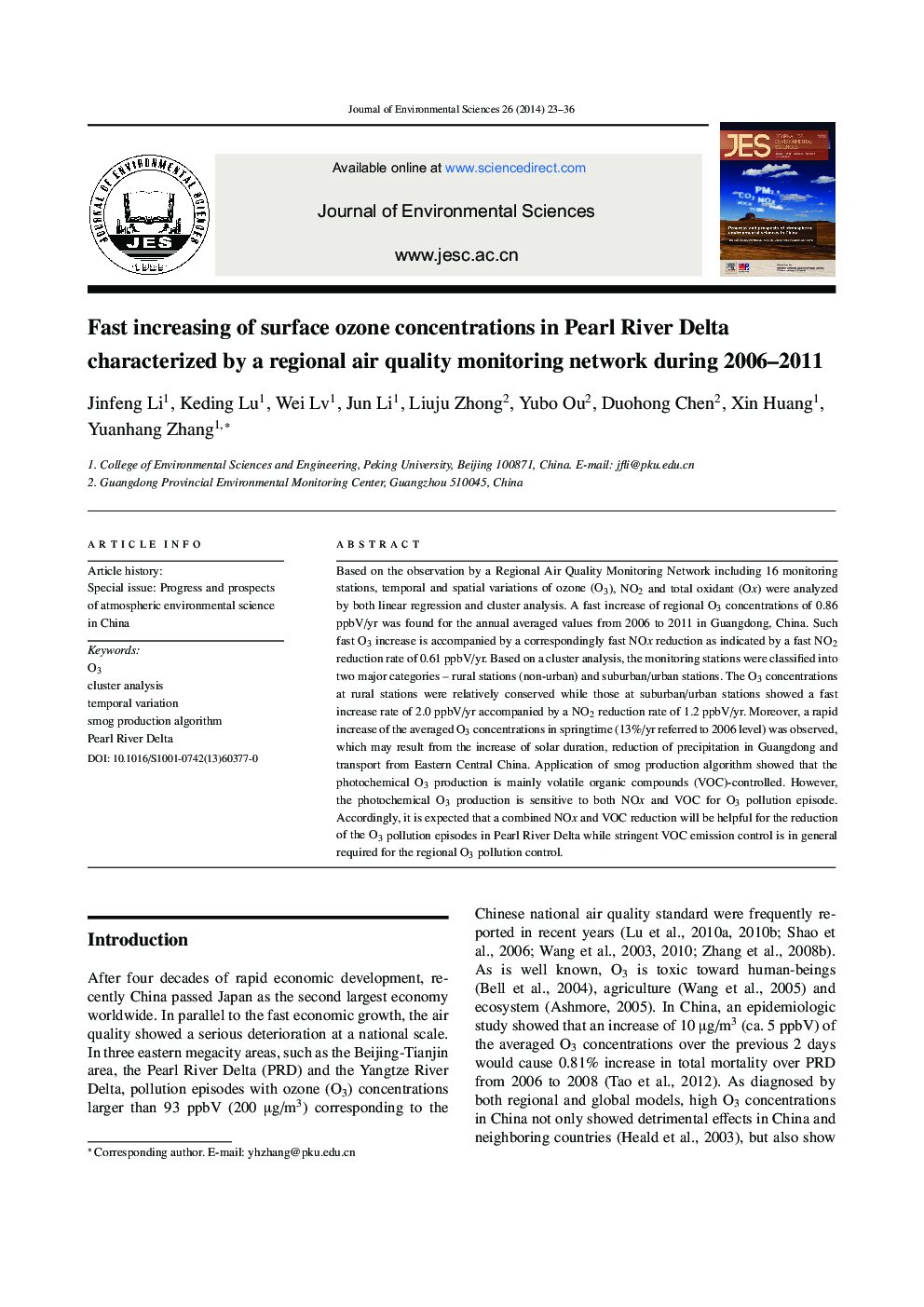| Article ID | Journal | Published Year | Pages | File Type |
|---|---|---|---|---|
| 4454785 | Journal of Environmental Sciences | 2014 | 14 Pages |
Based on the observation by a Regional Air Quality Monitoring Network including 16 monitoring stations, temporal and spatial variations of ozone (O3), NO2 and total oxidant (Ox) were analyzed by both linear regression and cluster analysis. A fast increase of regional O3 concentrations of 0.86 ppbV/yr was found for the annual averaged values from 2006 to 2011 in Guangdong, China. Such fast O3 increase is accompanied by a correspondingly fast NOx reduction as indicated by a fast NO2 reduction rate of 0.61 ppbV/yr. Based on a cluster analysis, the monitoring stations were classified into two major categories – rural stations (non-urban) and suburban/urban stations. The O3 concentrations at rural stations were relatively conserved while those at suburban/urban stations showed a fast increase rate of 2.0 ppbV/yr accompanied by a NO2 reduction rate of 1.2 ppbV/yr. Moreover, a rapid increase of the averaged O3 concentrations in springtime (13%/yr referred to 2006 level) was observed, which may result from the increase of solar duration, reduction of precipitation in Guangdong and transport from Eastern Central China. Application of smog production algorithm showed that the photochemical O3 production is mainly volatile organic compounds (VOC)-controlled. However, the photochemical O3 production is sensitive to both NOx and VOC for O3 pollution episode. Accordingly, it is expected that a combined NOx and VOC reduction will be helpful for the reduction of the O3 pollution episodes in Pearl River Delta while stringent VOC emission control is in general required for the regional O3 pollution control.
